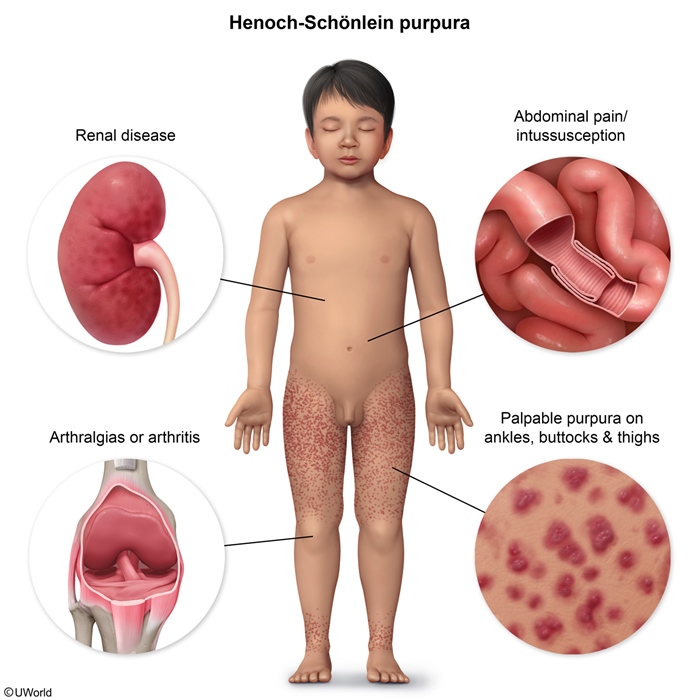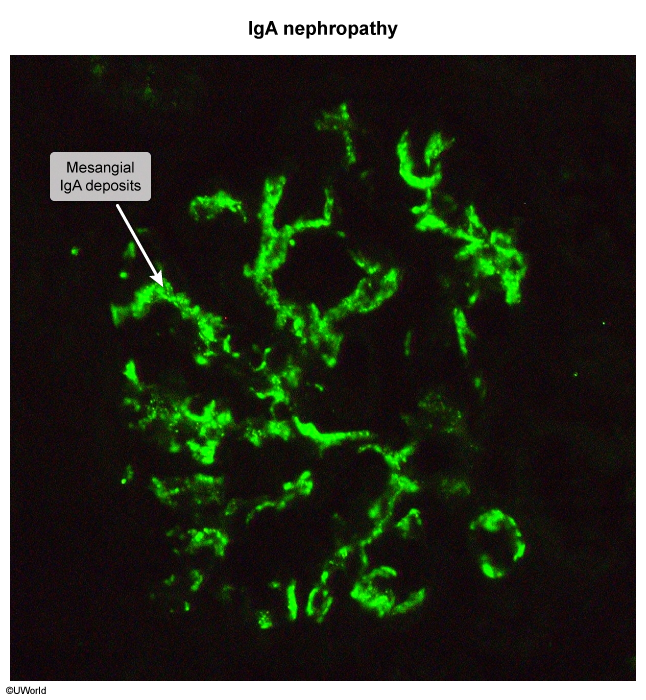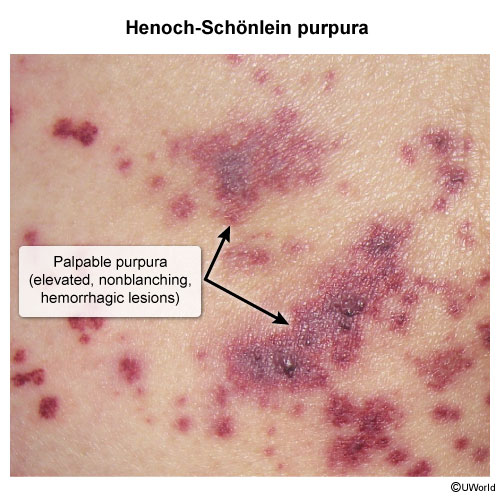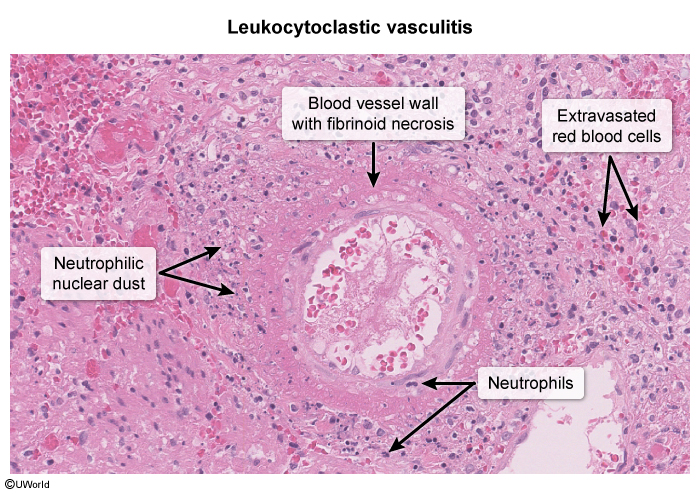IgA Vasculitis (Henoch-Schönlein Purpura)
Article Sections
Introduction
IgA vasculitis (previously called Henoch-Schönlein purpura) is an immune-mediated type III hypersensitivity reaction in which the deposition of IgA immune complexes leads to complement activation and inflammation in small vessels (eg, postcapillary venules). This condition typically occurs in children age 3-6 and affects the skin, gastrointestinal tract, kidneys, and joints.
Pathogenesis
IgA vasculitis is an immune-mediated type III hypersensitivity reaction that involves:
- Immune complex deposition: Circulating immune complexes containing IgA1 deposit in small vessel walls, leading to leukocytoclastic vasculitis.
- Complement activation: IgA immune complexes activate complement via the alternative and lectin pathways.
- Immune cell recruitment: Hydrolyzed complement proteins (eg, C5a) act as chemokines that attract neutrophils, which produce oxidants and release proteases (eg, elastase) that damage surrounding tissues.
IgA vasculitis is often preceded by infection (eg, upper respiratory tract), and therefore most commonly occurs in school-aged children during the fall and winter months. IgA vasculitis is associated with certain human leukocyte antigen (HLA) subtypes (eg, HLA-B35).
Continue Learning with UWorld
Get the full IgA Vasculitis (Henoch-Schönlein Purpura) article plus rich visuals, real-world cases, and in-depth insights from medical experts, all available through the UWorld Medical Library.
Figures

Images


